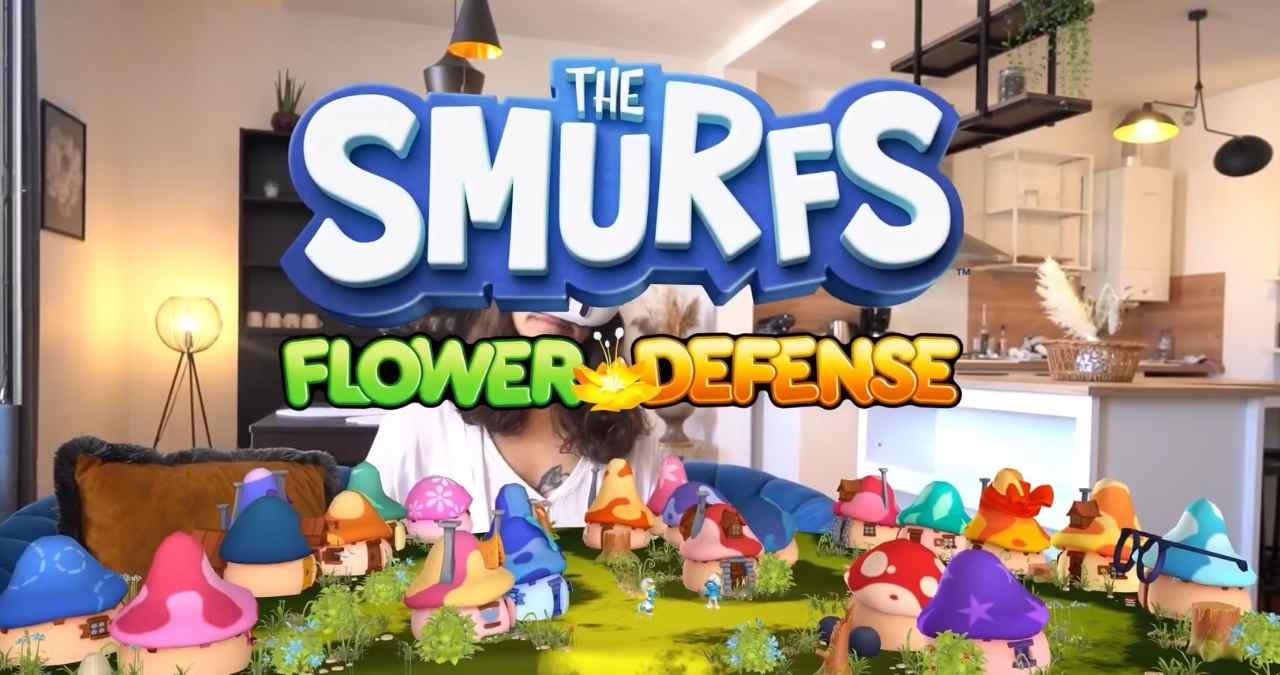The Smurfs might not be the first IP that comes to mind when you think of VR strategy, but Flower Defense is quietly shaping up to be more than a novelty spin-off. Built specifically for Meta Quest, it blends real-time planning with tactile, hands-on gameplay that works well in short bursts or longer sessions.
It’s a tower defense game at its core, but with a VR-native approach. You’re not clicking menus or dragging icons. You’re physically planting towers, interacting with upgrades, and managing the battlefield from a diorama-like perspective that makes full use of the headset’s spatial tools.
Gameplay combines physical building with strategic lane defense
Flower Defense plays out in a familiar tower defense format. Enemies advance in waves along defined paths, and you place various Smurf-themed towers to stop them. What changes the rhythm is the hands-on feel. You reach into the map to place and upgrade units, grab resources, and redirect your focus in real time.
It’s not overly complex, but it doesn’t feel mindless either. Each unit has a specific role, from slowing to splash damage to direct hits. The challenge comes from adapting quickly and keeping up with escalating waves, all while balancing your limited build resources.
Visual style stays true to the source without leaning on nostalgia
The art direction goes exactly where you’d expect bright forests, oversized mushrooms, expressive Smurf characters but it doesn’t lean too hard into legacy references. It feels like a standalone game that just happens to star the Smurfs, not a museum of callbacks.
Everything reads clearly at a distance, which matters when managing a board full of units and enemy types. The game isn’t pushing hardware, but it looks sharp enough and stays consistent in style. Animation and clarity seem to be the priorities here, not fidelity.
The VR layer adds more than just novelty
Where Flower Defense separates itself from flat-screen tower defense games is in how it uses space. Moving around the board, leaning in to observe paths, and interacting directly with units gives a stronger sense of involvement. It’s closer to manipulating a physical game board than navigating a UI.
There’s also subtle satisfaction in the kinetic feedback. Placing a tower, activating a skill, or yanking up a flowerbed all feel responsive. VR doesn’t just display the strategy it makes you part of it, which helps even basic mechanics feel fresh.
A simple concept made better through platform-native design
Flower Defense doesn’t rewrite the tower defense formula, and it doesn’t need to. What makes it stand out is how smoothly it translates a familiar genre into something tactile and readable in VR. It knows its scale, it keeps the pacing tight, and it builds everything around direct interaction.
That kind of focused design is rare in IP-based games, especially in VR. If it continues along that path, this could land as a quietly solid addition to the Quest library not because of who’s in it, but because of how it plays.
Virtual Reality Explorer & Game Reviewer
Always the first to plug in. VRSCOUT dives head-first into the most immersive VR worlds, analyzing mechanics, comfort, innovation, and that elusive “presence” factor. If he says it’s worth it, it probably is.




